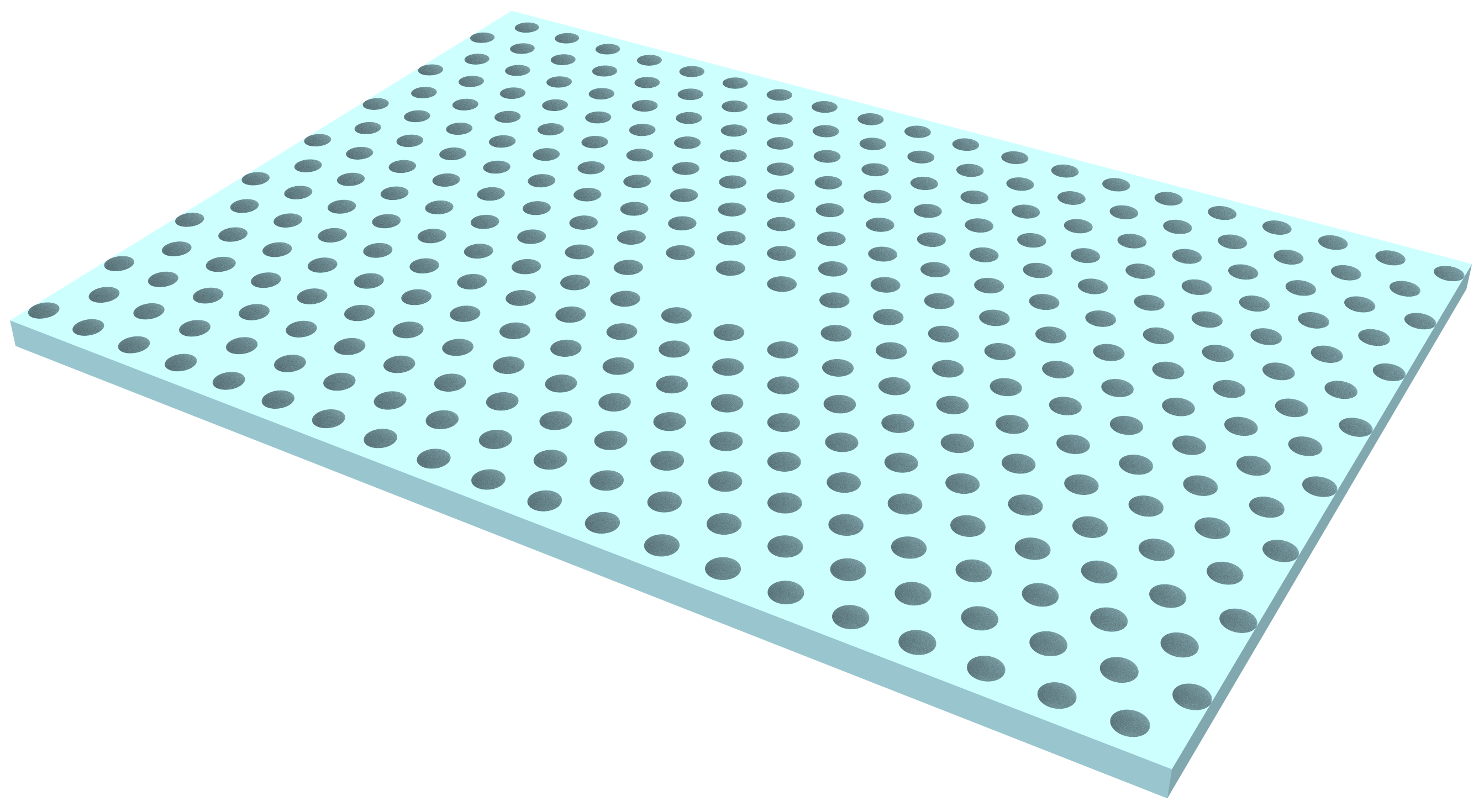# Photonic crystal cavity
A photonic crystal cavity is a type of microcavity designed with a photonic crystal structure, which is a periodic arrangement of materials with different refractive indices. The cavity is created by introducing a defect in the photonic crystal structure, which creates a region where light is confined. Photonic crystal cavities have a wide range of applications, including in lasers, sensors, and quantum information processing. They are also used in fundamental research to study light-matter interactions in small volumes.
In this example, we will simulate an optimized version of the commonly used L3 photonic crystal cavity composed of three missing holes in a hexagonal lattice of holes in a silicon slab. The design we use was optimized in the paper A full degree-of-freedom photonic crystal spatial light modulator (opens new window) to simultaneously have a very high quality factor and far-field emission strongly localized around the cavity normal direction.
To view the full example in Python, please click here (opens new window).
To view the example in our web GUI, please click here (opens new window).

